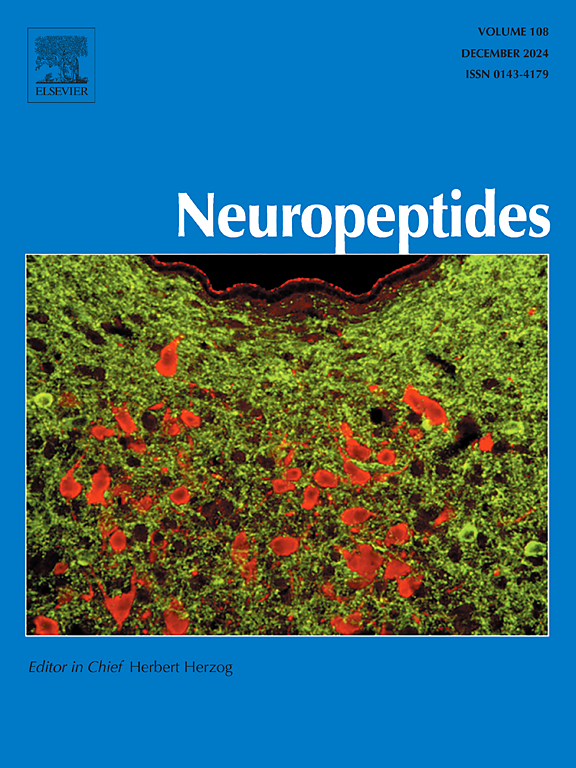Sucralose uses reward pathways to promote acute caloric intake
IF 2.7
3区 医学
Q3 ENDOCRINOLOGY & METABOLISM
引用次数: 0
Abstract
Non-nutritive sweeteners (NNSs) are used to reduce caloric intake by replacing sugar with compounds that are sweet but contain little or no calories. In this study, we investigate how non-nutritive sweetener sucralose to promote acute food intake in the fruit fly Drosophila melanogaster. Our results showed that acute exposure to NNSs sweetness induces a robust hyperphagic response in flies. Cellular and molecular dissection of this acute effect revealed the requirement of a reward pathway comprising of sweet taste neurons, octopaminergic neurons, and NPF neurons which drive increased food intake in response to sucralose. These data provide mechanistic insight into how NNSs can increase food intake, information that may help us better understand how artificially sweeteners may impact our physiology.
三氯蔗糖利用奖励途径促进急性热量摄入。
非营养性甜味剂(NNSs)是用来减少热量摄入的,它是用甜的但含有很少或不含热量的化合物来代替糖。在这项研究中,我们研究了非营养性甜味剂三氯蔗糖如何促进果蝇的急性食物摄入。我们的研究结果表明,急性暴露于NNSs甜度会引起果蝇强烈的贪食反应。对这种急性效应的细胞和分子解剖揭示了由甜味神经元、八胺能神经元和NPF神经元组成的奖赏通路的要求,这些神经元驱动对三氯蔗糖的食物摄入增加。这些数据为NNSs如何增加食物摄入量提供了机制上的见解,这些信息可能有助于我们更好地理解人工甜味剂如何影响我们的生理。
本文章由计算机程序翻译,如有差异,请以英文原文为准。
求助全文
约1分钟内获得全文
求助全文
来源期刊

Neuropeptides
医学-内分泌学与代谢
CiteScore
5.40
自引率
6.90%
发文量
55
审稿时长
>12 weeks
期刊介绍:
The aim of Neuropeptides is the rapid publication of original research and review articles, dealing with the structure, distribution, actions and functions of peptides in the central and peripheral nervous systems. The explosion of research activity in this field has led to the identification of numerous naturally occurring endogenous peptides which act as neurotransmitters, neuromodulators, or trophic factors, to mediate nervous system functions. Increasing numbers of non-peptide ligands of neuropeptide receptors have been developed, which act as agonists or antagonists in peptidergic systems.
The journal provides a unique opportunity of integrating the many disciplines involved in all neuropeptide research. The journal publishes articles on all aspects of the neuropeptide field, with particular emphasis on gene regulation of peptide expression, peptide receptor subtypes, transgenic and knockout mice with mutations in genes for neuropeptides and peptide receptors, neuroanatomy, physiology, behaviour, neurotrophic factors, preclinical drug evaluation, clinical studies, and clinical trials.
 求助内容:
求助内容: 应助结果提醒方式:
应助结果提醒方式:


